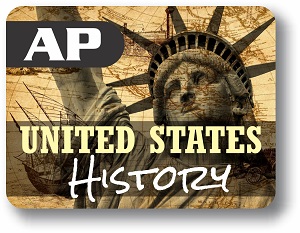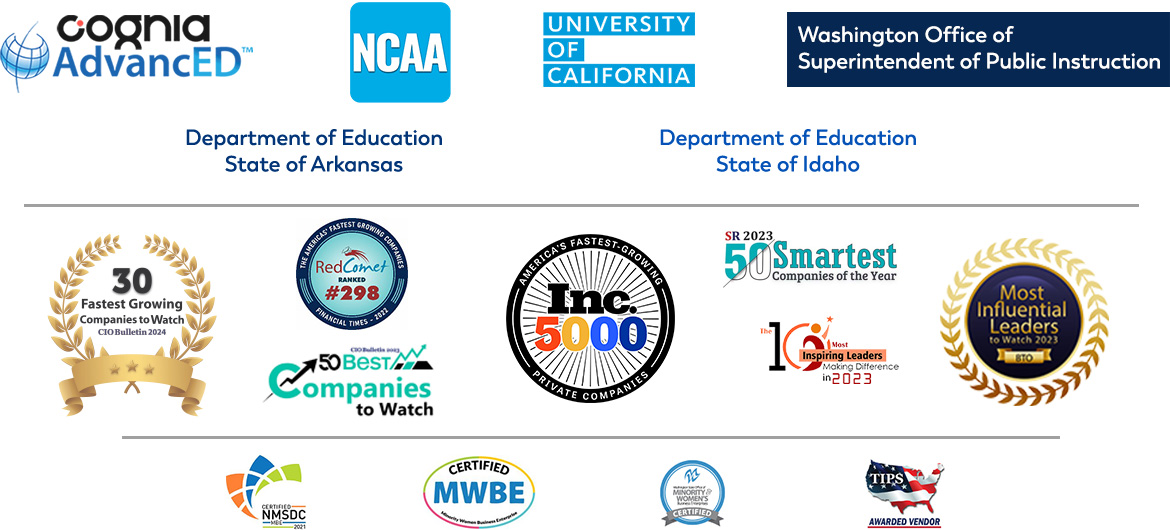Course Overview:
Investigate the people, events, and ideas that have shaped the United States from the end of the Civil War through today while applying what you learn to real-world problems. Within AP U.S. History, students will develop and use historical thinking skills (chronological reasoning, comparison and contextualization, crafting historical arguments from historical evidence, and historical interpretation and synthesis) to examine the history of the United States from 1491 to the present. Students will learn through active participation as they analyze sources and collaborate to gain a conceptual understanding of U.S. history. The AP U.S. History course is structured around nine time periods outlined within the College Board Advanced Placement United States History Framework. Each time period is divided into key concepts meant to contextualize history and show continuity and well as change over time. The intention is for students to explore history, establishing economic, political, and social patterns.
Prerequisites:
Required Material:
You will need the following items to complete this course:
- Foner, Eric. Give Me Liberty! An American History. Brief, Sixth Edition. W.W. Norton & Company. New York, 2020.
- College Board AP® United States History Framework
These books are not required for completion of the course, but offer more information and excellent preparation for the AP United States History Exam.
- AP U.S. History Crash Course. New Jersey: Research & Education Association.
- Princeton Review. Cracking the AP U.S. History Exam. New York: Penguin Random House.
Syllabus:
Segment l:
Module 1: Quest for the Americas
Objectives:
- Explore the different and complex societies of native North American peoples.
- Examine how European exploration led to the Columbian Exchange and empire building.
- Analyze how contact between American Indians and Europeans led to debate over each side’s worldview and concept of “civilized.”
- Compare the colonization practices of the Spanish, French, Dutch, and English.
- Explore the causes and effects of the British-American system of slavery.
- Examine the regional differences between the British colonies.
- Analyze how the competition of colonization led to rivalries between European nations and with American Indians.
- Examine the political, religious, and economic exchanges within the “Atlantic World.”
Lessons:
- 01 Module One Introduction
- 01 The First Americans
- 02 A Pivotal Encounter
- 03 The Valladolid Controversy
- 04 Imperial Rivalry
- 05 Enslavement
- 06 The British Colonies
- 07 King Philip's War
- 08 The Atlantic World
- 09 Discussion-Based Assessment
- 10 Module One Exam
Module 2: Colonies at War
objectives:
- Explore the causes and effects of the Seven Years’ War.
- Discuss how Protestant evangelical fervor and the Enlightenment influenced the British colonies.
- Examine the perceived and real political and economic restraints that sparked the colonial independence movement.
- Explore the creation of a republican form of government in the United States.
- Examine how migration within North America resulted in competition for resources and boundary conflicts.
- Discuss the development of an American national identity
Lessons:
- 00 Module Two Introduction
- 01 Transatlantic War
- 02 Shifting to Independence
- 03 First Government
- 04 The Constitution
- 05 Washington’s Road Map
- 06 Discussion-Based Assessment
- 07 Module Two Exam
Module 3: A New Republic
Objectives:
- Examine how the United States developed the world’s first modern mass democracy.
- Explore debates over the power of the federal government and states’ rights.
- Analyze how the Second Great Awakening influenced reform movements such as those for abolition and women’s rights.
- Examine the causes and effects of the Market Revolution.
- Analyze how the Louisiana Purchase sparked U.S. expansion, debates over new territories, and bitter conflicts with American Indians.
Lessons:
- 00 Module Three Introduction
- 01 Mass Democracy
- 02 Mass Culture
- 03 The Market Revolution
- 04 Defining Borders
- 05 American Indian Resistance
- 06 Discussion-Based Assessment
- 07 Module Three Exam
Module 4: American Civil War
Objectives:
- Examine the causes and effects of Manifest Destiny and the Mexican-American War.
- Explore the successes and failures of political compromises over slavery and new territory.
- Identify the various causes that led to the American Civil War.
- Compare and contrast the various approaches to Reconstruction.
- Examine the effects of Reconstruction on African Americans.
Lessons:
- 00 Module Four Introduction
- 01 Manifest Destiny
- 02 The Firebell Rings
- 03 The Civil War
- 04 Political Reconstruction
- 05 Social Reconstruction
- 06 Discussion-Based Assessment
- 07 Segment One Exam
Segment ll:
Module 5: A Growing Nation
Objectives:
- Explore how large-scale production, business consolidation, and consumption propelled America into the “Gilded Age.”
- Identify the ways in which government policy aided corporate expansion.
- Examine the causes for and the successes of the Populist movement.
- Explore the rise of labor movements.
- Analyze how the increase in migration led political and social reforms.
- Examine how westward expansion and industrialization impacted American Indians.
- Explore the cultural and intellectual movements that justified and challenged the social order of the Gilded Age.
Lessons:
- 00 Module Five Introduction
- 01 The Gilded Age
- 02 The Paradox of Progress
- 03 New Migration
- 04 The Social Response
- 05 Closing the Frontier
- 06 The Populists
- 07 Discussion-Based Assessment
- 08 Module Five Exam
Module 6: Imperialism & Progressivism
Objectives:
- Explore the transition of the United States from a rural and agricultural society to an urban and industrial society.
- Analyze how modernization led to political and cultural conflicts.
- Examine the Progressive reformers and how they attempted to combat economic instability, social inequality, and government corruption.
- Examine the causes and effects of World War II
- Examine the changes to immigration policy resulting from post-WWI xenophobia and increased international migration
Lessons:
- 00 Module Six Introduction
- 01 The Progressives
- 02 Imperialism
- 03 The Great War
- 04 The Jazz Age
- 05 Migration and Deportation
- 06 Discussion-Based Assessment
- 07 Module Six Exam
Module 7: The World at War
Objectives:
- Analyze how government responses to the Great Depression increased federal power and led to the creation of a limited welfare state.
- Examine the causes and effects of World War II.
- Examine how United States involvement in World War II altered its relationship with the rest of the world.
Lessons:
- 00 Module Seven Introduction
- 01 The Great Depression
- 02 The New Deal
- 03 WWII Abroad
- 04 WWII at Home
- 05 Discussion-Based Assessment
- 06 Module Seven Exam
Module 8: Cold War
Objectives:
- Examine the cause and effects of the Cold War.
- Compare and contrast the involvement of the United States in the conflicts in Korea and Vietnam.
- Explore how Cold War foreign policy extended to Latin America and the Middle East.
- Explore the reaction of United States citizens to Cold War foreign policy and actions.
- Examine the programs and policies of the Great Society.
- Explore the movements for civil rights by African Americans and other minority groups.
Lessons:
- 00 Module Eight Introduction
- 01 The Cold War
- 02 Postwar America
- 03 Civil Rights Movement
- 04 Civil Rights for All
- 05 The Great Society
- 06 Crisis of Confidence
- 07 Discussion-Based Assessment
- 08 Module Eight Exam
Module 9: A Brave New World
Objectives:
- Examine the ideological shift from liberalism to conservatism.
- Examine Reagan’s foreign policy and the end of the Cold War.
- Explore the creation and effects of worldwide free trade agreements.
- Explore the shifts to foreign policy as a result of the war on terrorism.
- Explore how the war on terrorism generated debates over domestic security and civil rights.
- Examine the demographic shifts of the modern era and how those changes intensified debates about immigration, gender roles, family structures, and national identity.
Lessons:
- 00 Module Nine Introduction
- 01 Shifting Ideology
- 02 Foreign Policy
- 03 Changing Demographics
- 04 Globalization
- 05 Practice AP Exam
- 06 Discussion-Based Assessment
- 07 Segment Two Exam

